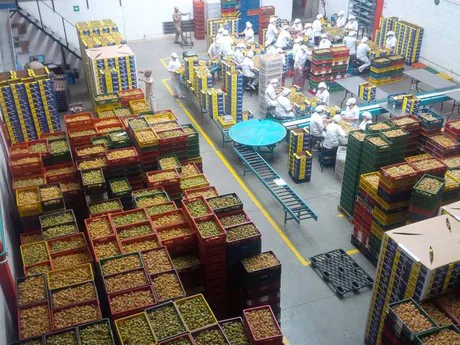Gooseberries are still having a difficult time gaining any momentum in the US market. Unlike in Europe where the fruit is much more accepted and is an established part of the produce aisle, gooseberries are still treated as a specialty item in the US.
"Gooseberries are generally more popular in Europe, and particularly Germany, who have done some interesting work with both the fresh and dried product," said Robinson Martinez of Global Agricultural Trading, based in California. "In the US, gooseberries have been available for close to 10 years, whereas in Europe, it is more than 20 years."
Europe 'beyond the proving phase'
Of course, this has resulted in a different approach when it comes to marketing and selling the fruit. Martinez pointed out that since Europe is past that 'proving' stage, the market is tuned to focus more on volume and price, as opposed to introductions. "The European market is beyond that trial and proving stage," he said. "Consumers know the fruit and how to use it. There are fewer hurdles in general and it's now about supply, demand and pricing. Prices are already close to the cost base, so it's more of a matter of volume."

Workers sort through gooseberries in Colombia
The US consumer of gooseberries, on the other hand, is different to the regular gooseberry consumer in Europe. "Because gooseberries are still a specialty item in the US, the consumer who will purchase them are not your typical shopper," Martinez noted. "They will be using them for juicing, for special occasions and they're also looking for the health properties. They are generally a higher-end consumer which means the consumer approach in the US is very different to what it is in Europe."
Hurdles for the US market - Freight
There are a number of reasons as to why gooseberries are still trying to gain a robust footing in the US market. One reason is freight. Generally all is fine when it comes to shipping gooseberries from their primary growing fields in Colombia to North America. However, around the Holidays, freight is a much bigger problem, and suppliers have a hard time getting the berries to the market.
"Freight is usually ok, except around the Holidays," Martinez said. "The next Holidays of Thanksgiving and Christmas will again be very challenging as produce items from Colombia experience significant competition from flowers in terms of freight space."
Hurdles for the US market - Paperwork
Probably the biggest challenge for gooseberry growers and importers is the sheer amount of paperwork and administrative requirements they need to go through to get their product from the fields of Colombia to stores in the United States. It's not just the official channels that are cumbersome. To be able to even ship out product, companies have to work together with local organizations who are also particular with who they cooperate with.
"There is a lot of protocol and paperwork involved," Martinez explained. "Firstly, you have to belong to an established group in Colombia to be able to ship product out. They don't let just anyone in as you have to have a proven track record of reliable operations. Secondly, you have to comply with the many regulations stipulated by both the Colombian authorities and the USDA. There are numerous stringent inspections that are required at every step of the process, which places more pressure on production."

A GAT employee inspects the fruit quality
All of these extra steps makes growing and importing gooseberries into the US more costly. Moreover, it's not just the direct impact in the form of additional costs, but also indirect impact which Martinez says is part of reason why gooseberries are still a specialty item in the US. "It's hard to build programs with such a challenging import environment," he said. "We feel the additional regulations put on Colombian produce hinders growth and increases costs to growers."
Movement steady but hope for more in the future
Right now, Global Agricultural Trading said it enjoys stable production and good supply. The company currently supplies much of the West Coast from Los Angeles, but would like to see more. "We bring in shipments weekly and have a good amount of supply for the West Coast," Martinez shared. "However, due to the regulations, it is not growing at the pace we would like it."
He hopes for a loosening of requirements once authorities and consumers see more fruit from Colombia and become more familiar and comfortable with growing conditions there. "Colombia, like many countries in South America, has a unique climate and does experience issues such as insect pressures," he said. "The country enjoys a vast array of exotic items but they also have to deal with the inherent challenges. As more produce ships from Colombia to the US, it should become easier for suppliers to bring products in the future. One example is the yellow dragonfruit program which has been a great success."
For more information:
Robinson Martinez
Global Agricultural Trading
Tel: +1 (877) 609-6006
robinsonm@gat-global.com
www.gat-global.com
